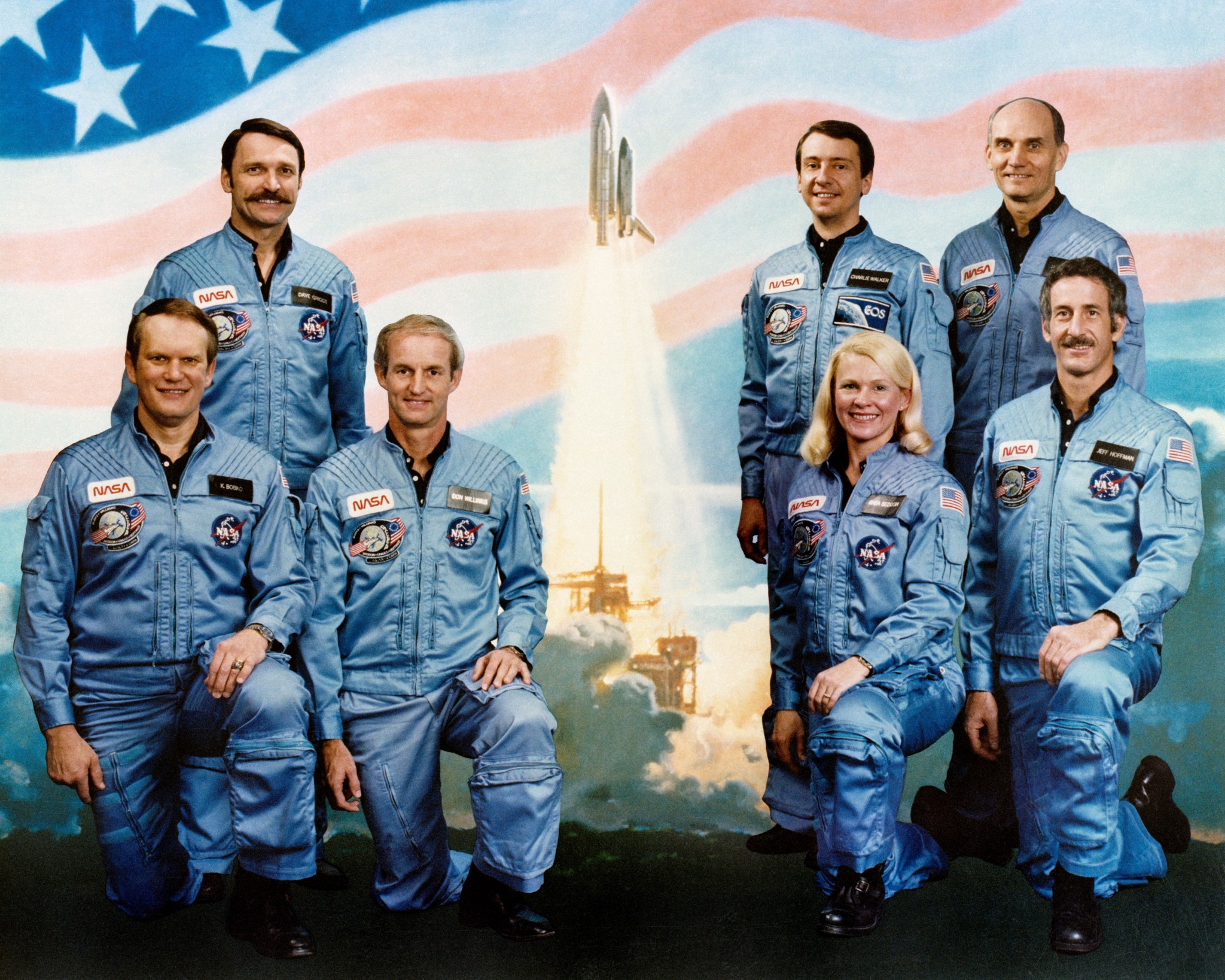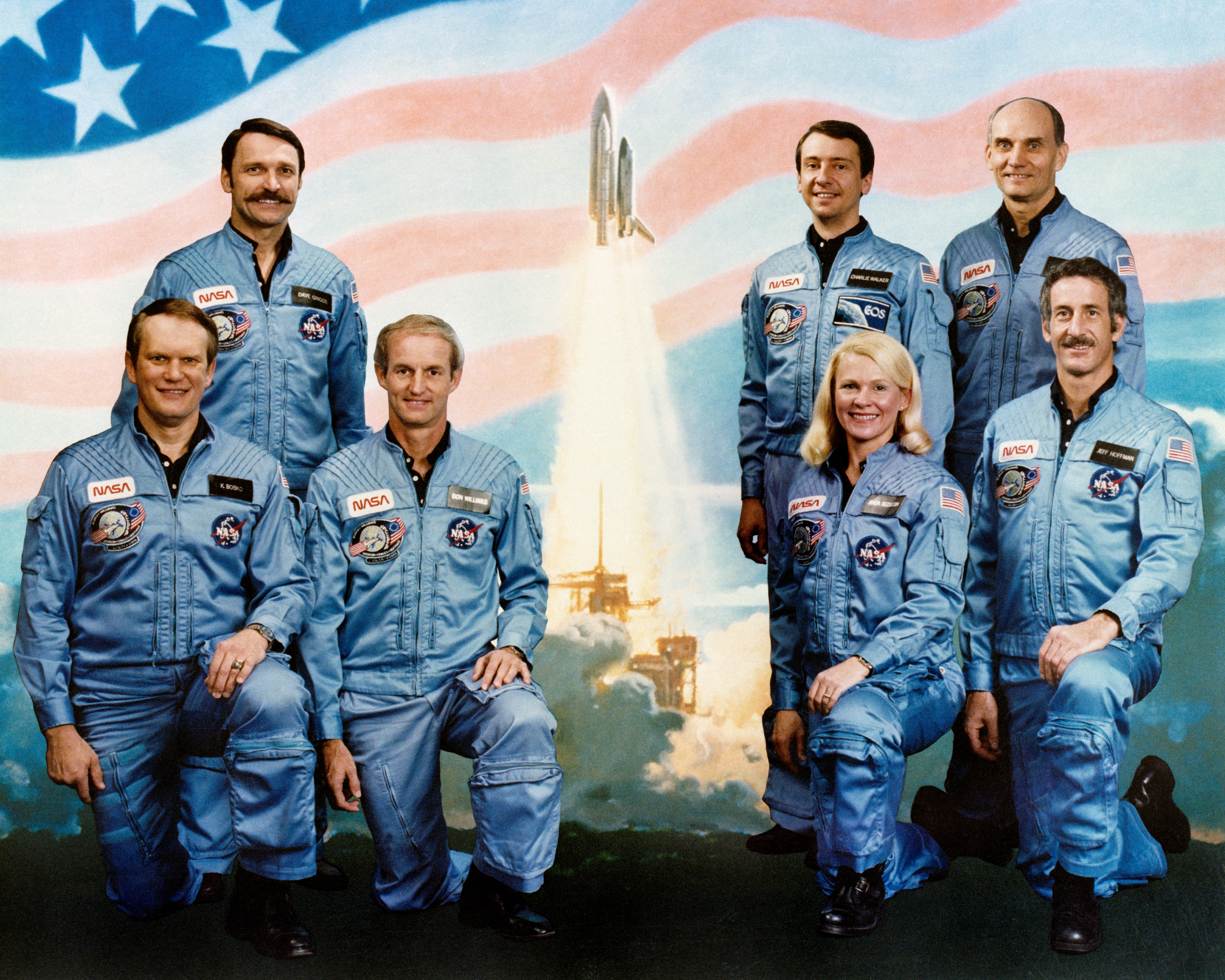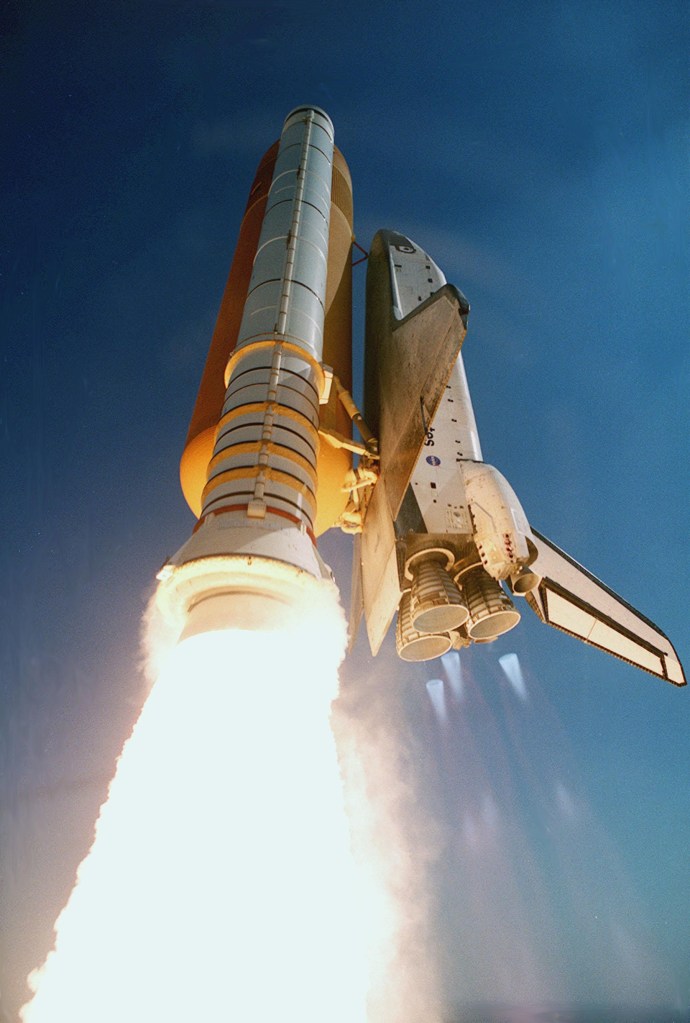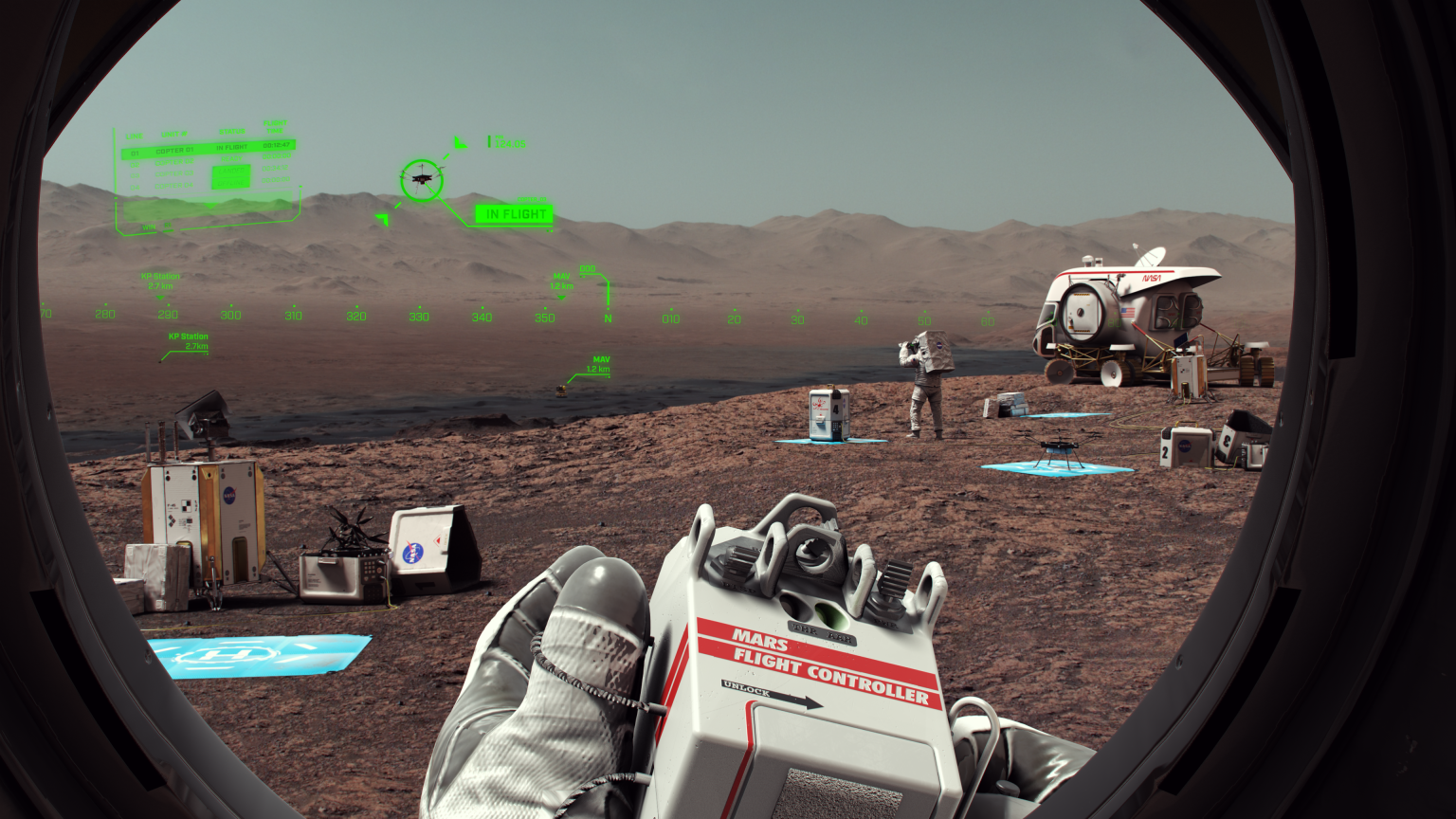
STS-51D
STS-51D was the 16th flight of NASA's Space Shuttle program, and the fourth flight of Space Shuttle Discovery.
Space Shuttle
mission duration
Launch
Landing

Mission Facts
Mission: TELSAT-I, Communications Satellite SYNCOM IV-3
Space Shuttle: Discovery
Launch Pad: 39A
Launch Weight: 250,891 pounds
Launched: April 12, 1985 at 8:59:05 a.m. EST
Landing Site: Kennedy Space Center, Florida
Landing: April 19, 1985 at 8:54:28 a.m. EST
Landing Weight: 198,014 pounds
Runway: 33
Rollout Distance: 10,298 feet
Rollout Time: 63 seconds
Revolution: 110
Mission Duration: 6 days, 23 hours, 55 minutes, 23 seconds
Orbit Altitude: 285 nautical miles
Orbit Inclination: 28.5 degrees
Miles Traveled: 2.9 million
Crew
Karol J. Bobko, Commander
Donald E. Williams, Pilot
M. Rhea Seddon, Mission Specialist
S. David Griggs, Mission Specialist
Jeffrey A. Hoffman, Mission Specialist
Charles D. Walker, Payload Specialist
U.S. Senator E.J. Garn, Payload Specialist
Launch/Landing Highlights
The launch set for March 19 was rescheduled to March 28 due to remanifesting of payloads from canceled mission 51-E. The mission was delayed further due to damage to the orbiter’s payload bay door when the facility access platform dropped. The launch on April 12 delayed 55 minutes when a ship entered the restricted solid rocket booster recovery area.
Extensive brake damage and a blown tire during the landing prompted the landing of future flights at Edwards Air Force Base until implementation of the nose wheel steering.
Mission Highlights
The TELESAT-l (ANIK C-1) communications satellite was deployed attached to the payload assist module (PAM-D) motor. SYNCOM IV-3 (also known as LEASAT-3) was also deployed but the spacecraft sequencer failed to initiate the antenna deployment, spin up and ignition of perigee kick motor. The mission was extended two days to make certain the sequencer start lever was in the proper position. Griggs and Hoffman performed a space walk to attach Flyswatter devices to the remote manipulator system. Seddon engaged LEASAT lever using the remote manipulator system but the post deployment sequence did not begin. Other payloads were: Continuous Flow Electrophoresis System (CFES) III, flying for sixth time; two Shuttle Student Involvement Program (SSIP) experiments; American Flight Echocardiograph (AFE); two Get Away Specials; Phase Partitioning Experiments (PPE); astronomy photography verification test; medical experiments and toys in space, an informal study of the behavior of simple toys in weightless environment, with results to be made available to school students.
STS-51D
Shuttle News
Retired Space Shuttle Locations
Shuttle Atlantis – Kennedy Space Center Visitor Complex Shuttle Discovery – Steven F. Udvar-Hazy Center Shuttle Endeavour – California Science…
Read the Story











































